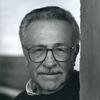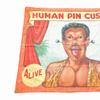The Whitney Publishes Second Volume of Films of Andy Warhol Catalogue Raisonné, Transfers Archive to MoMA
- October 25, 2021 19:51
The Whitney Museum of American Art has announced the publication of the second volume of the catalogue raisonné of the films of Andy Warhol. Illuminating the true significance of Warhol’s radical experiments in film and his mastery of the medium, The Films of Andy Warhol Catalogue Raisonné, 1963–1965, Volume 2 features extensive research undertaken by the Whitney and will be released for worldwide distribution by Yale University Press on October 26. The Museum also announced that it reached an agreement last month to gift its vast research materials and archival holdings related to Warhol’s filmmaking to the Museum of Modern Art (MoMA). With the transfer of the Warhol Film Archive (established by the Whitney Museum of American Art), MoMA expands its extensive Warhol art and film and will continue the important research and work of the catalogue raisonné.
In 1970, Warhol took all of his films out of distribution, removing them from public view and relegating them to a realm of myth, hearsay, and misinformation. About a decade later, John G. Hanhardt, general editor of The Films of Andy Warhol Catalogue Raisonné, 1963–1965 and then the curator and head of film and video at the Whitney, proposed an ambitious and unusually collaborative project: the Whitney and MoMA would work together to preserve, restore, exhibit, distribute, and catalogue the entirety of Warhol’s cinema. Warhol’s cooperation was enlisted, and in 1984, he deposited his original film materials with MoMA and the Whitney began foundational research for the catalogue raisonné. This endeavor, formally known as the Andy Warhol Film Project, has been a joint undertaking of the Whitney, MoMA, the Andy Warhol Foundation for the Visual Arts, Inc., and the Andy Warhol Museum. As a result of last month’s transfer, the Warhol Film Archive, established by the Whitney, becomes a permanent part of MoMA’s Department of Film, led by Rajendra Roy, the Celeste Bartos Chief Curator of Film.
“The publication of this second volume is immensely important. The Whitney’s ongoing efforts to document, research, and study Warhol’s remarkable film works—along with the preservation and digitization initiatives of the Museum of Modern Art and the Andy Warhol Museum—have brought them to a wider audience,” said Adam D. Weinberg, Alice Pratt Brown Director of the Whitney Museum. “By gifting the Whitney’s extensive research on Warhol’s filmmaking to MoMA, we can ensure that information about the artist’s groundbreaking and now-iconic films will remain accessible to scholars and the public for many years to come. I would like to extend my deepest thanks to MoMA, the Andy Warhol Foundation for the Visual Arts, and the Andy Warhol Museum for their commitment to this epic venture and their generosity in supporting the creation of the second volume of the film catalogue raisonné with valuable information and access to the films.”
The Films of Andy Warhol Catalogue Raisonné, 1963–1965 features insightful introductory essays that discuss Warhol’s influences, source materials, working methods, and technical innovations, as well as his engagement with the performers, writers, and other collaborators who participated in his groundbreaking films. Comprehensive entries offer detailed cataloguing information, full descriptions, and critical analysis of more than a hundred individual works, accompanied by copious stills and behind-the-scenes photographs that provide fascinating visual documentation of the films. This new volume complements Andy Warhol Screen Tests: The Films of Andy Warhol Catalogue Raisonné, Volume 1, authored by the late film scholar and Warhol authority Callie Angell and published by the Whitney and Abrams in 2006 to wide critical acclaim. A digitized version of Andy Warhol Screen Tests will be available on Yale University Press’s Art and Architecture ePortal in the spring of 2022.
The films Warhol made throughout his career are among the most significant works in the prolific American artist’s oeuvre. In the 1960s, Warhol produced hundreds of films—short and long, silent and with sound, scripted and improvised. This second volume of the catalogue raisonné focuses on the films he produced from 1963, when he first started working with the medium, to 1965. Many of Warhol’s best-known films, including Sleep (1963), Empire (1964), Vinyl (1965), and Outer and Inner Space (1965), were made during this time of intense creativity. His work of this period redefined the genre of film, challenged scholars’ and critics’ understanding of the medium, drew a wide range of audiences, and attracted critical attention.
Esteemed film scholar Bruce Jenkins brings his depth of knowledge about the medium of film and keen understanding of the importance of Warhol’s work as a whole to shed crucial light on this period in essays covering 1963 and 1964 as well as numerous entries. Critically acclaimed filmmaker Tom Kalin contributed the essay for 1965 and essential entries for the same year. The entries by renowned scholars Jonathan Flatley, Elena Gorfinkel, Homay King, Ara Osterweil, Marc Siegel, Juan Antonio Suárez, and Gregory Zinman for 1965 offer new understandings about the films of that year. Along with John G. Hanhardt’s revelatory introduction, the overview essays, and entries by a broad range of contributors offer insightful perspectives on Warhol’s films, his network of participants, the films’ exhibition histories, and the culture in which Warhol created these works. The second volume includes more than seven hundred stills and documentary images to further elucidate the film works, including many that have circulated only rarely.
“Callie Angell’s detailed study and innovative analysis of Warhol’s working methods in the first volume of the film catalogue raisonné is a landmark in film studies that deepens our understanding of the importance of film to Warhol’s art,” said John G. Hanhardt. “With this second volume, we extend Angell’s work and further the scholarship of a critical period in this artist’s career. The entries for the one hundred titles in this book capture an intensive period of creativity and invention on Warhol’s part. I want to extend my deepest thanks to each of the authors whose texts provide descriptions and analyses of the films. Bruce Jenkins’s contributions to this volume are exemplary for their depth and clarity. I am also deeply indebted to Tom Kalin for his essay and contributions as well as to Jonathan Flatley, Elena Gorfinkel, Claire K. Henry, Homay King, Ara Osterweil, Marc Siegel, Juan Antonio Suárez, and Gregory Zinman for bringing Warhol’s films into focus with such intelligence and insightfulness.”
Adam D. Weinberg remarked, “My profound gratitude and admiration go to John G. Hanhardt, without whom this project would never have materialized. The Whitney is proud to have partnered with Hanhardt and the stellar team who joined him to work on this unprecedented publication. We are also especially pleased that MoMA will be able to continue the Whitney’s decades of groundbreaking work on the Andy Warhol film catalogues raisonnés as we celebrate the milestone publication of the second volume later this month.”
On December 2 at 7 pm, the Whitney presents a virtual program celebrating the publication of The Films of Andy Warhol Catalogue Raisonné, 1963–1965 with John G. Hanhardt, Bruce Jenkins, and Tom Kalin. The program considers the relationship between Warhol’s films and his work in other media and the paradox of the artist’s deeply influential yet largely unknown films.
Purchase from the museum shop.




















